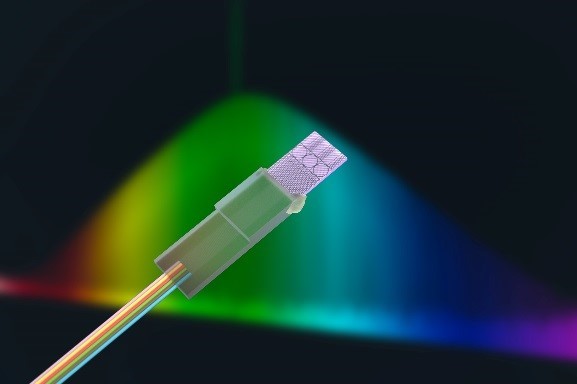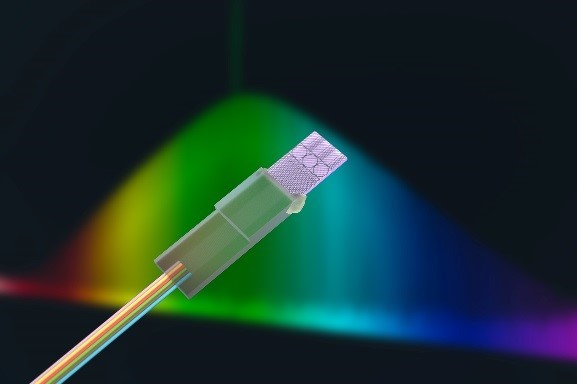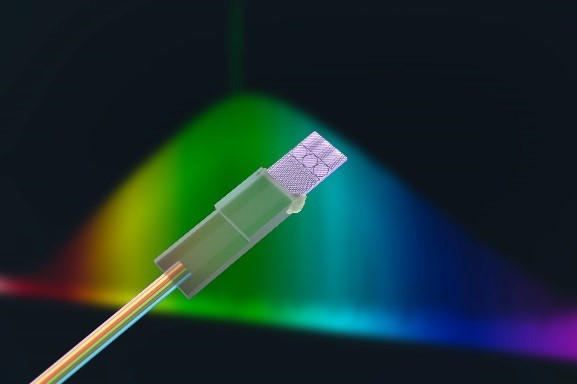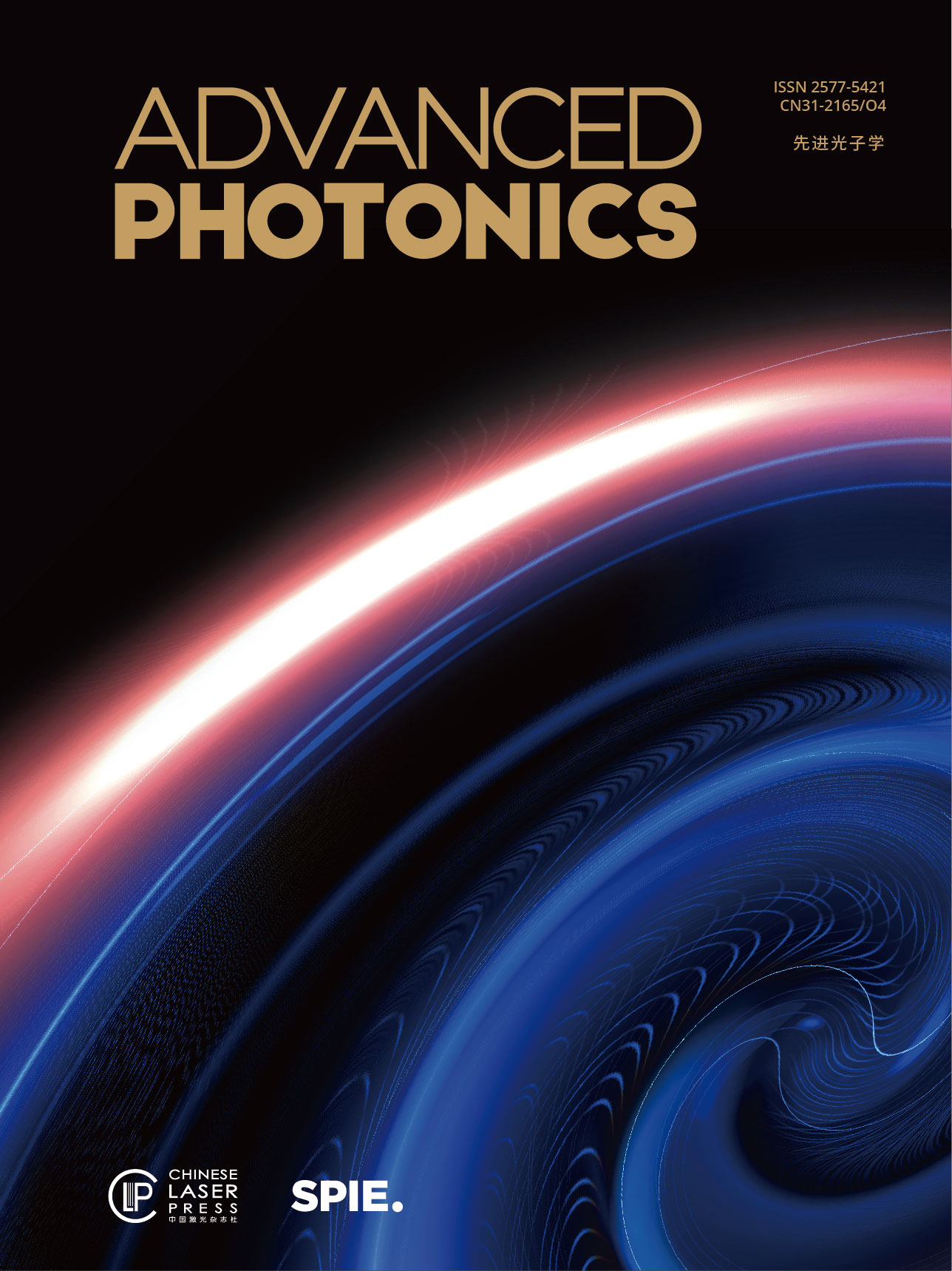Optical frequency combs on a chip
Optical frequency combs are comprised of discrete and equidistant frequencies, just like a precise "light ruler" in frequency domain. They have been regarded as revolutionary light sources for various research fields including advanced frequency metrology, optical atom clock, precision spectroscopy, ultrahigh-speed communication, distance ranging, molecule detection, and exoplanet searching. Traditional frequency combs are usually built on complicated solid- or fiber-based mode-locked lasers; while highly-integrated systems with reduced size, weight, power and cost (even like a flash disk in our daily life), turns to be crucial to reach their full potentials in out-of-lab applications. Prof. Wenfu Zhang's research team from Xi'an Institute of Optics and Mechanics, Chinese Academy of Sciences, reviews recent progress of soliton comb generations in chip-scale microresonators that pave the way for miniaturized integration of frequency comb systems, which is newly published in Advanced Photonics, Vol. 2, Issue 3, 2020 (Weiqiang Wang, Leiran Wang, Wenfu Zhang. Advances in soliton microcomb generation[J]. Advanced Photonics, 2020, 2(3): 034001).
Small chip with big capability


Integrated microcavity chip after packaging
Thanks to rapid development of micro/nano fabrication technology, the breakthrough in high-quality (Q) factor microcavities enables ultrahigh energy buildup inside the cavities, which gives birth to microcavity-based frequency combs (microcombs). The ultrahigh Q results in significantly-increased light-matter interaction lengths and ultra-low thresholds for nonlinear optical effects, that is, lower power consumption with higher efficiency. Also due to a smaller perimeter (typically less than 1 mm for microcavities versus several meters for fiber lasers), now light can travel around a cavity circle faster — the repetition rate of emitted pulses can be boosted by three orders of magnitude higher, from sub-gigahertz to even terahertz. All these merits together, make the microcombs promising as a new generation of frequency comb systems.
Capturing "running around" frequency in a heated microcavity


Generation of soliton optical comb with integrated Microcavity
The generation of microcombs arises from a parametric frequency conversion through a nonlinear four-wave mixing effect that generates a pair of photons which are equally spaced to the pump photon. In principle, a narrow-linewidth continuous wave laser is injected to a certain cavity mode and then the comb comes out; while in practice, the intracavity thermal effect will shift the resonance frequency that causes detuning from pump and comb light, which inhibits the generation of soliton microcombs (SMCs)—a most desired low-noise state for the full coherent feature across whole spectral coverage. Meanwhile, once the chaotic system transitions into soliton state, the dramatic intracavity power drop can also result in pump frequency shifting out of the cavity resonance and thus, shorten the lifetime that a soliton can survive. So, it becomes rather technically challenging in experiments to capture steady SMCs. To date, various approaches have been successfully implemented to overcome the strong thermal-optical effect which blinds SMC observation for more than 6 years since the first microcomb realization, including the rapid frequency and thermal tuning, "power-kicking", forward and backward sweeping, auxiliary-laser-assistant, self-injection-locking using continuous wave lasers, and synchronous driving by pulsed sources. In addition, extraordinary soliton states (soliton crystals, Stokes solitons, breathers, molecules, cavity-solitons and dark solitons), which present distinct behaviors in both frequency and time domain from the single soliton, have also been observed.

Application of microcavity soliton optical frequency comb
The published review summarizes latest achievements of soliton microcombs, including the basic theory and physical model, presented experimental techniques for single-soliton generation as well as various extraordinary soliton states, proof-of-concept applications in extensive fields, with a perspective on their fantastic potentials and facing challenges. This work could inspire a more comprehensive understanding of the cavity nonlinear phenomena and dynamics, and promote intensive exploration of their growing potentials in the future.


